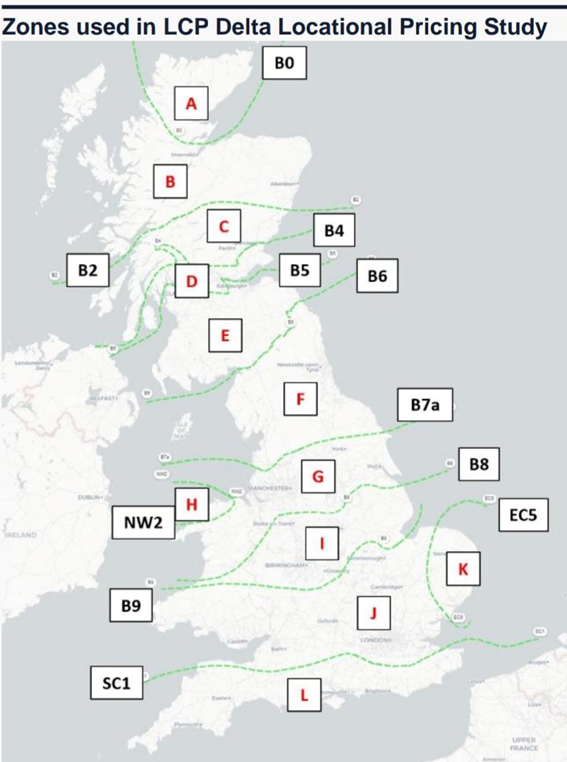RenewableUK Cymru is warning the Government against introducing a new scheme called zonal electricity pricing, because of the risk that it would jeopardise investment in clean energy, undermine economic growth and push bills up in Wales.
Under the scheme, which is currently being considered by Ministers, the UK would be divided up into different zones, and consumers would pay different rates for the same amount of electricity, creating a postcode lottery for billpayers.
Proposed zones - modelling by LCP Delta

The exact design of any zonal system is unclear and the government is yet to propose a number or location of the zones.
But modelling carried out on its behalf by consultants LCP Delta shows Wales could be split into four zones, with three facing high prices due to high demand and limited generation.
The proposals see south Wales in the same zone as London, while much of mid and north Wales would be combined in a zone with cities like Manchester and Leeds, with a significant risk that Welsh energy bills will increase.
Abi Beck, Head of Strategic Communications for RenewableUK Cymru said:
"This scheme turns energy pricing into a postcode lottery, but Wales isn't just taking a gamble—it could be being dealt a losing hand, facing higher bills, stalled investment, and an uncertain energy future.
"While some data centres might relocate to areas with lower costs, heavy Welsh industries, which depend on affordable, clean power for decarbonisation, have no such flexibility. Port Talbot Steelworks, a major energy consumer, is currently transitioning from fossil fuels to an electric arc furnace. It cannot simply pick up and move operations to a lower-cost region like Scotland to offset the rising electricity prices.
"Everyone wants lower prices and greater incentives for renewables. The most effective way governments can achieve this is by investing in modernised grid infrastructure, to transfer the green energy from where it is produced to where it is needed, powering homes and businesses alike."
 KEYFACT Energy
KEYFACT Energy